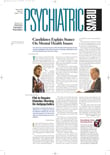A group cognitive-behavioral intervention reduces the number of symptoms associated with posttraumatic stress disorder (PTSD) and depression among middle-school students in Los Angeles who witnessed or directly experienced life-threatening violence, a new study shows.
Researchers with the RAND Corporation and the University of California at Los Angeles screened 769 sixth graders at two middle schools in East Los Angeles, a poor, mostly Latino section of the city, during the 2001-02 academic year.
To determine study eligibility, researchers asked the students whether they had directly experienced or witnessed life-threatening violence, such as a shooting or stabbing. They also used the Child PTSD Symptom Scale (CPSS) to assess trauma-related symptoms.
Students were eligible for the study if they reported being exposed to three or more violent events either as a victim or witness, showed clinically significant levels of PTSD on the CPSS, and were willing to discuss their traumatic experiences and related symptoms among a group of peers.
Of the 769 students, 159 met eligibility criteria, and 126 chose to participate in the study with parental consent.
Researchers randomized the 126 students into two groups. One group of 61 students received the Cognitive-Behavioral Intervention for Trauma in Schools (CBITS) (see story on
page 7); the other students were placed on a waiting list to receive the intervention.
Students participating in the group intervention met with a school social worker and five to eight other students for 10 sessions, during which they learned about common reactions to trauma exposure, the link between thoughts and feelings, and how to approach anxiety-provoking situations.
Researchers assessed both groups and their families at baseline, three months, and six months with the CPSS, the Child Depressive Inventory (CDI), and the Pediatric Symptom Checklist.
At baseline, both groups of children reported being the victims of an average of 2.8 violent events and witnessing an average of 5.9 such events during the preceding year.
“Violence was endemic in these communities,” said the study’s principal investigator, Bradley Stein, M.D., Ph.D.
Stein is also lead author of an article based on the study, “Mental Health Intervention for Children Exposed to Violence” in the August 6 Journal of the American Medical Association.
Baseline assessments showed that the average CPSS score for both groups of children was 24 on a scale of 0 to 51, indicating moderate to severe levels of PTSD. The mean CDI score was 17 on a scale of 0 to 52.
At the three-month mark, children receiving the group intervention reported significantly lower mean scores on the trauma scale than had their counterparts (8.9 versus 15.5).
According to the report, 86 percent of children who received the intervention had fewer symptoms of violence-related distress than would be expected with no intervention.
Mean scores on the depression scale were also lower for children who participated in the groups (9.4 versus 12.7). The report noted that 67 percent who received the intervention had fewer symptoms of depression at the three-month mark than what would be expected with no intervention.
A large majority of parents (78 percent) also reported improvement in their children’s levels of psychosocial dysfunction after receiving the intervention.
By the six-month evaluation, the second group of students had received the CBITS intervention, and their scores closely matched those of the first group on all measures.
Stein said that he found the results “promising” and that further research may compare the CBITS intervention with another controlled condition, such as individualized supportive therapy.
JAMA 2003 290 603
